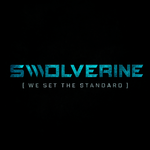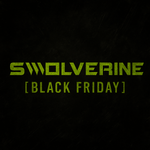Selective Androgen Receptor Modulators (SARMs) have become increasingly popular among athletes and bodybuilders seeking enhanced performance, lean muscle growth, and accelerated recovery — without the side effects commonly associated with anabolic steroids. Two of the most widely compared SARMs are RAD-140 (Testolone) and LGD-4033 (Ligandrol).
While both compounds act on androgen receptors to promote muscle growth and improve strength, they differ significantly in potency, safety, cycle structure, and ideal applications. RAD-140 is considered one of the strongest SARMs available, delivering rapid size and strength gains, while LGD-4033 is valued for its controlled, lean muscle growth and generally milder side effect profile.
In this guide, you’ll learn:
➤ What RAD-140 and LGD-4033 are and how they work
➤ Their muscle-building benefits compared
➤ Optimal cycles and dosing strategies
➤ Stacking protocols for maximizing results
➤ Side effects and safety considerations
➤ How to choose the right SARM for your goals
What Is RAD‑140 (Testolone)
RAD‑140, known as Testolone, is one of the most potent and well-studied selective androgen receptor modulators (SARMs) available today. Originally developed by Radius Health for clinical use in muscle wasting and breast cancer treatment, RAD‑140 has quickly gained popularity among bodybuilders and athletes for its highly anabolic, tissue-selective properties.
Unlike anabolic steroids, RAD‑140 binds directly and selectively to androgen receptors in skeletal muscle and bone, triggering anabolic activity without significantly impacting other androgen-sensitive tissues like the prostate or scalp. This makes it an appealing option for users seeking rapid muscle growth, strength gains, and improved recovery without the extensive risks seen with traditional anabolics.
Leung, Kenneth, et al. "RAD-140 drug-induced liver injury." Ochsner Journal 22.4 (2022): 361-365.
Key Takeaways for RAD‑140
➤ Highly potent anabolic effect — accelerates muscle hypertrophy faster than most SARMs
➤ Tissue-selective activation — targets muscle and bone, sparing the prostate and other androgen-sensitive organs
➤ Performance-driven benefits — boosts strength, recovery, and endurance
➤ Short half-life (~16–20 hours) — requires consistent daily dosing for stable results
Preclinical studies have further reinforced its safety profile. In animal models, RAD‑140 did not increase prostate mass or alter testosterone levels, highlighting its favorable tissue selectivity.
What Is LGD‑4033 (Ligandrol)
LGD‑4033, commonly known as Ligandrol, is a nonsteroidal, orally active SARM developed by Ligand Pharmaceuticals. Initially designed to combat muscle wasting and osteoporosis, LGD‑4033 quickly became one of the most widely studied SARMs because of its impressive clinical safety data and consistent lean mass gains.
Ligandrol binds selectively to androgen receptors in skeletal muscle, stimulating growth while minimizing effects on unwanted tissues. What sets LGD‑4033 apart from RAD‑140 is its milder anabolic profile and greater tolerability, making it a better fit for users who want lean, controlled gains without rapid size increases.
In a randomized, double-blind, placebo-controlled clinical trial involving healthy young men found that LGD‑4033 significantly increased lean body mass in a dose-dependent manner and was well tolerated, with no significant changes in prostate-specific antigen (PSA) levels.
Key Takeaways for LGD‑4033
➤ Clinically backed safety profile — supported by multiple human trials
➤ Lean, controlled gains — less water retention compared to RAD‑140
➤ Milder anabolic effect — better for recomposition and cutting phases
➤ Longer half-life (~24–36 hours) — more forgiving dosing window than RAD‑140
Mechanisms of Action Compared
While RAD‑140 and LGD‑4033 are both selective androgen receptor modulators (SARMs), they work differently in terms of binding strength, anabolic potency, and hormonal impact. Understanding these differences is key to selecting the right compound for your goals.
RAD‑140: High Potency, Aggressive Activation
RAD‑140 binds to androgen receptors (ARs) in skeletal muscle and bone with exceptionally high affinity, triggering powerful anabolic signaling. This leads to faster muscle hypertrophy, strength gains, and increased protein synthesis.
Key characteristics of RAD‑140’s mechanism:
→ High binding affinity → stronger AR activation than LGD‑4033
→ Accelerates muscle protein synthesis → faster hypertrophy and lean mass accrual
→ Neuroprotective properties → shown in preclinical studies via MAPK pathway activation
→ Minimal cross-reactivity → limited stimulation of prostate and other androgen-sensitive tissues
Giandonato, Joseph A. "SELECTIVE ANDROGEN RECEPTOR MODULATORS: A BRIEF NARRATIVE REVIEW." European Journal of Physical Education and Sport Science 12.7 (2025).
LGD‑4033: Steady, Controlled Anabolic Signaling
LGD‑4033 also binds selectively to ARs in muscle and bone but with slightly lower affinity compared to RAD‑140. The result is slower, steadier lean mass gains and better hormonal stability, making it more suitable for longer cycles or cutting phases.
Key characteristics of LGD‑4033’s mechanism:
→ Moderate AR activation → delivers a stable, controlled anabolic response
→ Backed by clinical human trials → safety and efficacy well documented
→ Less testosterone suppression → fewer hormonal side effects compared to RAD‑140
→ Longer half-life (~24–36 hours) → supports more stable blood levels with once-daily dosing
Summary:
→ RAD‑140 = stronger binding, faster muscle growth, best for bulking
→ LGD‑4033 = steadier lean gains, better hormonal tolerance, ideal for cutting and recomposition
Muscle Growth and Strength Gains Compared
When it comes to building muscle and increasing strength, both RAD‑140 and LGD‑4033 are highly effective SARMs — but their potency, speed of results, and impact on body composition are different.
RAD‑140: Faster Size and Strength Gains
RAD‑140 is widely considered the most potent anabolic SARM on the market. Its strong binding affinity and activation of muscle-specific androgen receptors translate into rapid increases in lean muscle mass and strength within shorter cycle durations.
Vasireddi, Nikhil, et al. "Athlete Selective Androgen Receptor Modulators Abuse: A Systematic Review." The American Journal of Sports Medicine 53.4 (2025): 999-1009.
What to expect with RAD‑140:
→ Muscle Growth: Users typically report 6–10 lbs of lean mass gains over an 8–12 week cycle
→ Strength Increases: Significant improvements in compound lifts and explosive power
→ Recomposition Effect: Promotes fat loss while enhancing lean tissue density
→ Best Use Case: Short, aggressive bulking or strength-focused phases
LGD‑4033: Steadier, Leaner Gains
LGD‑4033 provides slower but highly controlled muscle growth, making it a preferred choice for users prioritizing lean mass preservation and aesthetic recomposition over rapid size increases. Its human clinical trial data supports consistent increases in lean body mass with fewer androgenic side effects compared to RAD‑140.
qHoffmann, Daniel B., et al. "Effects of ligandrol as a selective androgen receptor modulator in a rat model for osteoporosis." Journal of bone and mineral metabolism 41.6 (2023): 741-751.
What to expect with LGD‑4033:
→ Muscle Growth: Typical gains range from 4–7 lbs of lean mass over a 6–8 week cycle
→ Strength Improvements: Noticeable but more gradual compared to RAD‑140
→ Recomposition Support: Excellent for maintaining muscle while cutting fat
→ Best Use Case: Lean bulking, recomposition, and cutting cycles
Comparison Summary
| Factor | RAD‑140 (Testolone) | LGD‑4033 (Ligandrol) |
|---|---|---|
| Potency | High — strongest anabolic SARM | Moderate — controlled growth |
| Muscle Gains | 6–10 lbs in 8–12 weeks | 4–7 lbs in 6–8 weeks |
| Strength Gains | Significant, rapid | Moderate, steady |
| Fat Loss Support | Strong recomposition effect | Mild recomposition effect |
| Best For | Bulking & power phases | Cutting, recomposition, lean gains |
Cycle & Dosing Strategies for RAD‑140 and LGD‑4033
Because RAD‑140 and LGD‑4033 differ in potency, half-life, and androgenic activity, their optimal dosing protocols are not the same. Below are safe and effective strategies for beginners, intermediates, and advanced users.
RAD‑140 (Testolone) Cycle Strategies
Beginner Protocol
→ Dosage: 10 mg per day
→ Cycle Length: 8 weeks
→ Best Use: Lean bulking, strength gains
→ PCT Required: Yes — RAD‑140 is highly suppressive, requiring a post-cycle therapy protocol
Intermediate Protocol
→ Dosage: 15–20 mg per day
→ Cycle Length: 8–10 weeks
→ Best Use: Aggressive bulking or recomposition
→ PCT Required: Mandatory, include a SERM like Nolvadex or Clomid to restore testosterone
Advanced Protocol (not recommended for first-time users)
→ Dosage: 20–30 mg per day
→ Cycle Length: 10–12 weeks
→ Best Use: Short-term size and power-focused cycles
→ PCT Required: Essential, often stacked with aromatase inhibitors like Aromasin for estrogen balance
LGD‑4033 (Ligandrol) Cycle Strategies
Beginner Protocol
→ Dosage: 5 mg per day
→ Cycle Length: 6 weeks
→ Best Use: Lean bulking, recomposition, cutting support
→ PCT Required: Often necessary at higher doses but sometimes optional for short cycles under 6 weeks
Intermediate Protocol
→ Dosage: 8–10 mg per day
→ Cycle Length: 6–8 weeks
→ Best Use: Moderate lean mass gains and strength increases
→ PCT Required: Recommended to normalize testosterone levels quickly
Advanced Protocol
→ Dosage: 10–15 mg per day
→ Cycle Length: 8 weeks
→ Best Use: Controlled bulking cycles with minimal fat gain
→ PCT Required: Usually required depending on stacking strategy
Best Practices for Both Compounds
→ Always split daily dosing if stacking with other SARMs to maintain stable blood levels
→ Limit cycles to one SARM at a time for beginners to assess tolerance
→ Run full bloodwork pre- and post-cycle to monitor liver enzymes, lipids, and testosterone
→ Incorporate support supplements like ZMT for sleep and hormonal health and Liver Support if stacking multiple compounds
Stacking Strategies: RAD‑140 and LGD‑4033
Stacking SARMs strategically can enhance results, but the choice between RAD‑140 and LGD‑4033 — or combining them with other compounds — depends on your goal, experience level, and risk tolerance. Here’s how to approach stacking effectively.
Stacking RAD‑140
For Bulking & Strength
→ RAD‑140 + MK‑677: Enhances GH and IGF‑1 release, boosting recovery, size, and joint support
→ RAD‑140 + YK‑11: Synergistic anabolic response for advanced bulking cycles
→ RAD‑140 + Ostarine (MK‑2866): Supports lean mass retention while minimizing suppression
Best Practices:
→ Keep RAD‑140 cycles to 8–10 weeks when stacking
→ Always include a PCT protocol, especially with higher-dose stacks
→ Support recovery with ZMT for hormonal balance and Liver Support if stacking multiple compounds
Stacking LGD‑4033
For Lean Gains & Recomposition
→ LGD‑4033 + MK‑677: Increases GH output, aiding recovery and fat-free mass growth
→ LGD‑4033 + Ostarine (MK‑2866): Excellent for cutting phases to maintain muscle
→ LGD‑4033 + Cardarine (GW‑501516): Enhances endurance and fat loss during lean cycles
Best Practices:
→ Keep LGD cycles to 6–8 weeks when stacking
→ Pair LGD stacks with support supplements like Clean Carbs for energy and recovery
→ PCT may be lighter compared to RAD‑140 but is still recommended for hormonal normalization
Stacking RAD‑140 and LGD‑4033 Together
For experienced users, stacking RAD‑140 and LGD‑4033 can create a hybrid bulking and recomposition protocol, combining RAD‑140’s fast-acting size and strength gains with LGD’s controlled lean mass accrual.
Example Cycle (Intermediate):
→ RAD‑140: 10 mg/day
→ LGD‑4033: 5 mg/day
→ Cycle Length: 8 weeks
→ Support: ZMT for recovery, Liver Support if stacking multiple SARMs
→ PCT: Essential — consider a SERM-based PCT (e.g., Nolvadex)
Side Effects and Safety Profile: RAD‑140 vs LGD‑4033
While both RAD‑140 and LGD‑4033 are often marketed as “safer” alternatives to anabolic steroids, they still carry hormonal, metabolic, and organ-related risks. Understanding how each compound affects the body is essential for planning a safe cycle.
RAD‑140: Higher Potency, Greater Suppression
Because RAD‑140 binds so strongly to androgen receptors, its impact on natural testosterone production is significant. Studies and user data consistently show that RAD‑140 can cause marked suppression of luteinizing hormone (LH) and follicle-stimulating hormone (FSH) — which are essential for maintaining healthy testosterone levels.
Potential Side Effects of RAD‑140:
→ Testosterone Suppression: Often requires a robust PCT protocol for recovery
→ Hormonal Imbalances: Changes in LH and FSH levels during and post-cycle
→ Liver Enzyme Elevation: Though rare, high-dose cycles can stress liver function
→ Mood and Sleep Disturbances: Some users report irritability or insomnia
→ Lipid Disruption: May lower HDL and slightly raise LDL levels
Because RAD‑140 is highly suppressive, full bloodwork is recommended both before and after cycles. Stacking RAD‑140 with other SARMs or anabolic agents can amplify these risks and makes PCT essential.
LGD‑4033: Better Tolerability, Milder Suppression
LGD‑4033 is generally considered less suppressive than RAD‑140 at equivalent doses, but its effects on testosterone and lipid metabolism are still clinically significant. In a Phase I clinical trial, reported that LGD‑4033 temporarily reduced testosterone and sex hormone-binding globulin (SHBG) levels in a dose-dependent manner, though levels normalized within weeks post-cycle.
Potential Side Effects of LGD‑4033:
→ Mild Testosterone Suppression: Usually reversible within 2–4 weeks after cessation
→ Cholesterol Alterations: Reductions in HDL (“good” cholesterol) at higher doses
→ Occasional Water Retention: Less pronounced than with RAD‑140
→ Fatigue and Headaches: Reported in a minority of users during longer cycles
→ Gastrointestinal Discomfort: Rare but possible in sensitive individuals
While LGD‑4033 offers a more stable hormonal profile and generally fewer side effects than RAD‑140, cycles beyond 8 weeks or doses above 10 mg still carry suppression risks. A lighter PCT is typically sufficient, but bloodwork should guide recovery strategies.
Comparative Safety Overview
| Factor | RAD‑140 | LGD‑4033 |
|---|---|---|
| Testosterone Suppression | High → PCT essential | Mild → often reversible |
| Liver Impact | Low to moderate at high doses | Low |
| Cholesterol Disruption | Moderate → HDL reduction | Mild → dose-dependent |
| Mood/Behavioral Effects | More common | Less frequent |
| Water Retention | Mild, sometimes noticeable | Rare |
| Best Use Case | Bulking, rapid strength gains | Lean gains, cutting, recomposition |
Legal Status and WADA Testing Concerns
Before considering RAD‑140 or LGD‑4033, it’s important to understand their legal classifications and anti-doping status.
Legal Status
RAD‑140
→ Classified as a research chemical
→ Not FDA-approved for human use
→ Legal to purchase for research purposes but not legally marketed as a dietary supplement
→ Widely available online through gray-market vendors
LGD‑4033
→ Also classified as a research chemical
→ Not FDA-approved for human consumption
→ Sometimes sold in “supplement” form, but regulatory enforcement actions have increased in recent years
Both compounds are unapproved for medical use in the U.S. and are typically available only through non-regulated online sources. Quality, purity, and dosing consistency can vary widely.
WADA Anti-Doping Status
Both RAD‑140 and LGD‑4033 are included on the World Anti-Doping Agency (WADA) Prohibited List under S1: Anabolic Agents. Athletes subject to anti-doping policies who test positive for either compound risk disqualification, suspension, or sanctions.
Detection Windows
→ RAD‑140: Metabolites detectable for up to 8 weeks post-cycle
→ LGD‑4033: Metabolites detectable for 3–6 weeks post-cycle
Athletes competing in tested organizations should avoid both compounds entirely.
Disclaimer
This content is for informational and educational purposes only. RAD‑140 and LGD‑4033 are not FDA-approved for human consumption, and their safety and efficacy have not been established in long-term clinical studies. Use of these compounds may carry significant health risks, including hormonal suppression, metabolic disruption, and organ stress.
Always consult with a qualified healthcare provider before starting any supplementation or performance-enhancing regimen. Athletes subject to anti-doping regulations should avoid both compounds, as they are banned substances under WADA guidelines.
Final Comparison Table: RAD‑140 vs LGD‑4033
| Feature | RAD‑140 (Testolone) | LGD‑4033 (Ligandrol) |
|---|---|---|
| Potency | Very high → strongest SARM available | Moderate → controlled growth |
| Binding Affinity | High → aggressive AR activation | Moderate → stable activation |
| Muscle Gains | 6–10 lbs over 8–12 weeks | 4–7 lbs over 6–8 weeks |
| Strength Gains | Significant, rapid improvements | Steady, moderate increases |
| Recomposition Effect | Strong → builds muscle + burns fat | Moderate → excellent for lean phases |
| Half-Life | ~16–20 hours | ~24–36 hours |
| Suppression Risk | High → requires full PCT | Mild to moderate → lighter PCT |
| Clinical Research | Mostly preclinical data | Backed by human clinical trials |
| Best Use Case | Bulking, rapid strength, recomposition | Lean bulking, cutting, recomposition |
| WADA Status | Banned | Banned |
Conclusion: Which SARM Is Right for You?
Choosing between RAD‑140 and LGD‑4033 comes down to your goals, experience level, and tolerance for risk.
Choose RAD‑140 if you want:
→ Fast, aggressive muscle and strength gains
→ Significant recomposition effects (build muscle + lose fat simultaneously)
→ A powerful bulking agent when paired with proper PCT and recovery protocols
Choose LGD‑4033 if you want:
→ Lean, controlled growth with fewer hormonal side effects
→ A better-tolerated compound backed by human clinical trials
→ A versatile option for recomposition or cutting cycles
For advanced athletes, stacking RAD‑140 and LGD‑4033 can create a hybrid protocol — combining RAD‑140’s potent anabolic activity with LGD‑4033’s steady lean mass preservation — but this approach requires bloodwork monitoring and proper PCT to ensure safety







